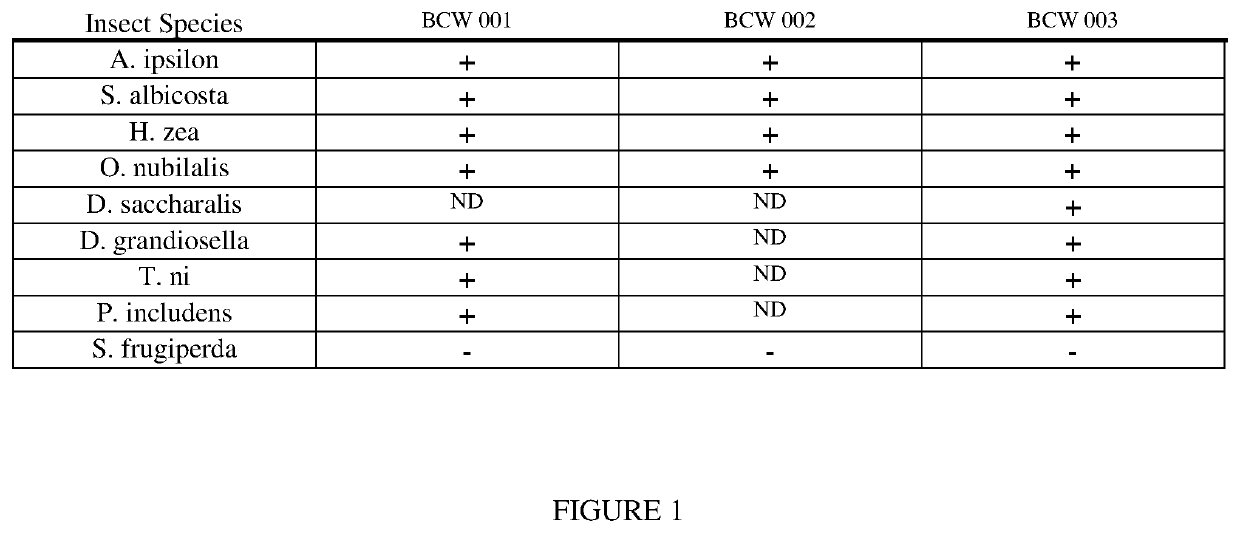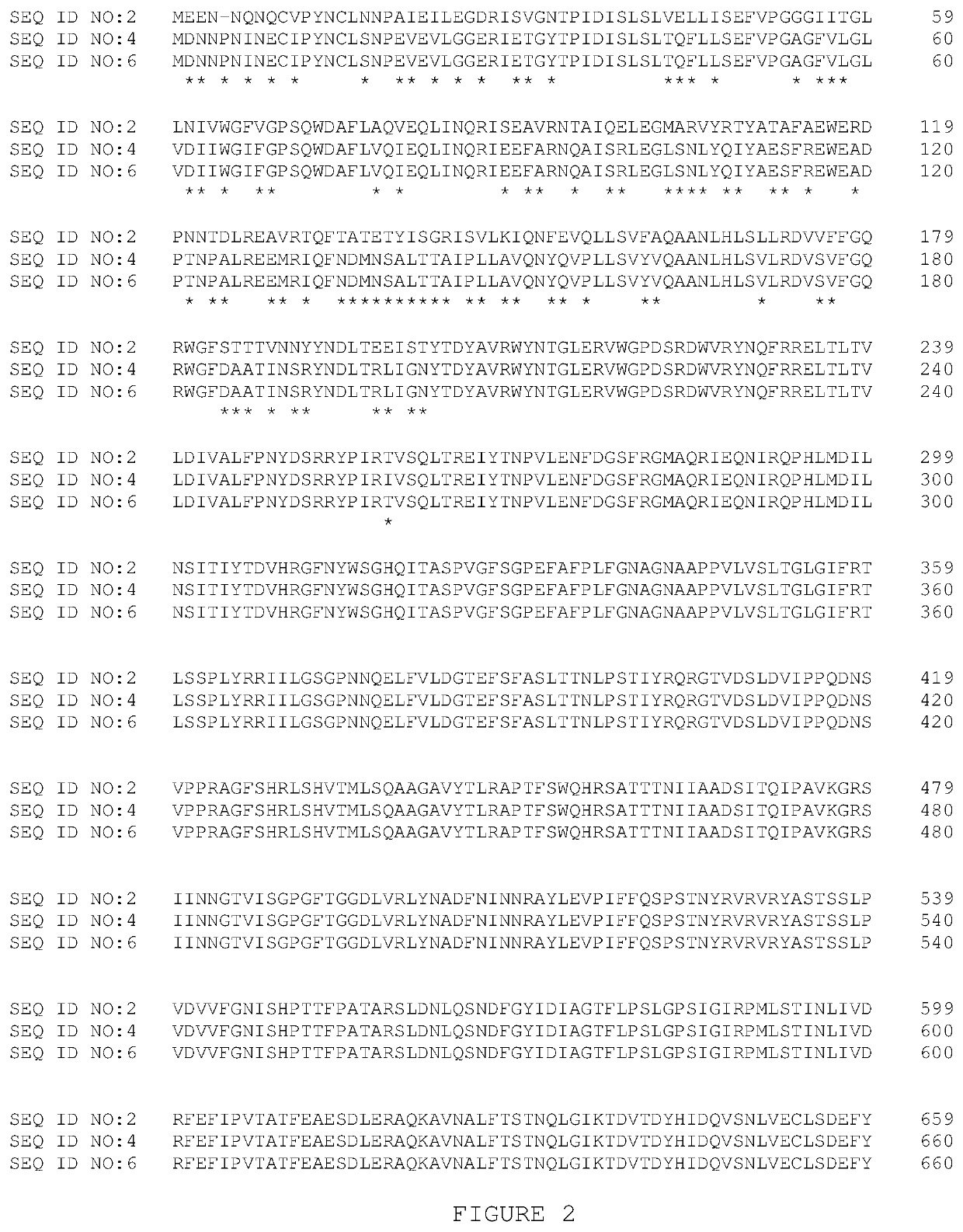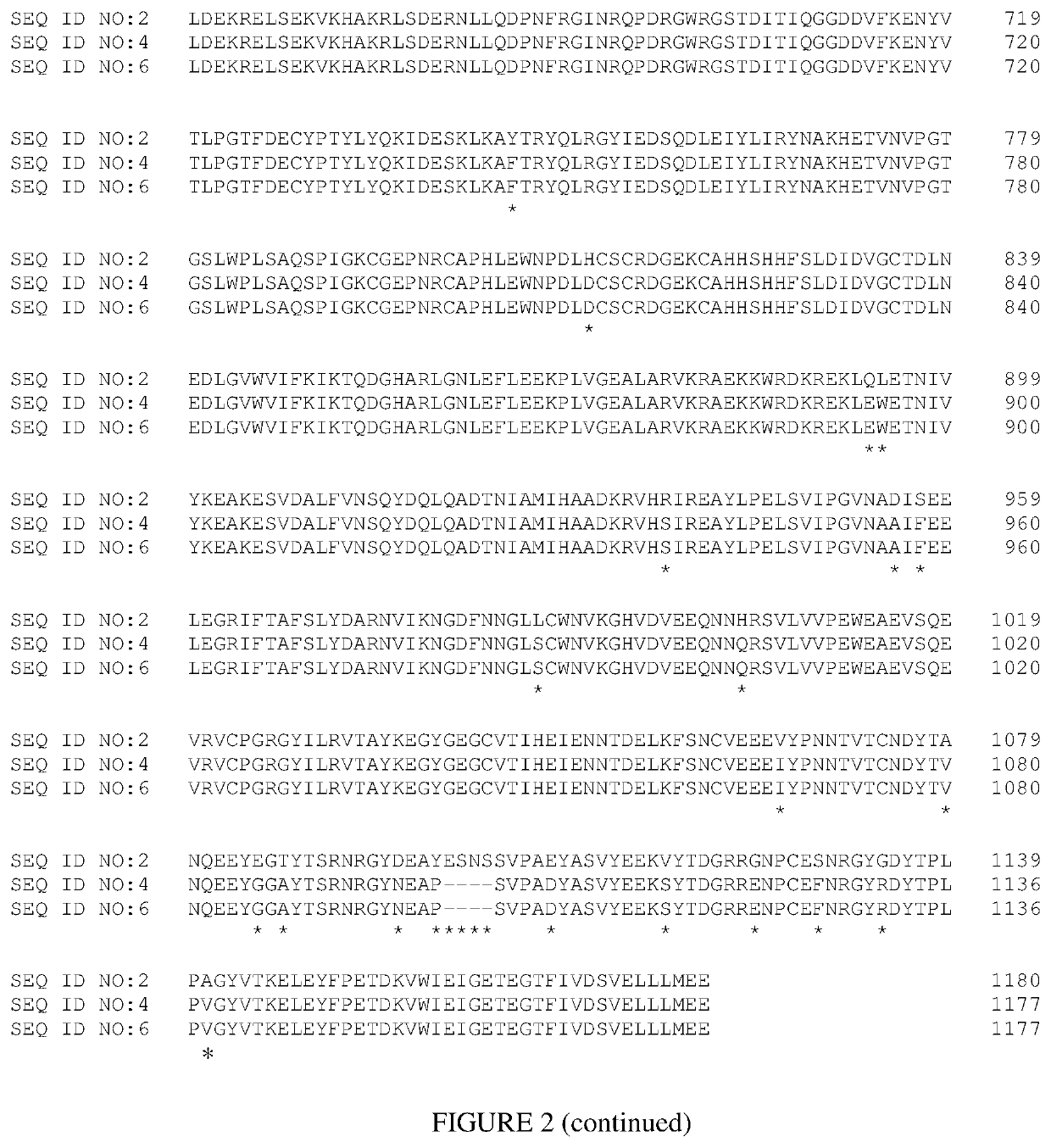Pesticidal toxin proteins active against lepidopteran insects
a technology of toxin proteins and lepidopterans, applied in the field of insect inhibitory proteins, can solve the problems of particularly difficult control of transgenic insecticidal traits, and achieve the effect of improving the stability and stability of the insect, reducing the risk of infection, and improving the resistan
- Summary
- Abstract
- Description
- Claims
- Application Information
AI Technical Summary
Benefits of technology
Problems solved by technology
Method used
Image
Examples
example 1
[0097]This example teaches the discovery and analysis of the toxin protein BCW 001 and construction of chimeric toxins BCW 002 and BCW 003.
[0098]Bt strain EG4384 was identified to confer Lepidopteran activity in diet bioassays using spore crystal preparations. The sequence of the genome of this strain was generated, raw sequence reads processed, contigs assembled from processed reads, open reading frames identified that showed homology to Cry1 proteins, and deduced amino acid sequences analyzed. A particular open reading frame as set forth in SEQ ID NO:1 was identified that encoded a deduced amino acid sequence of a protein (BCW 001, SEQ ID NO:2) that exhibits a novel amino acid sequence compared to most Cry1 proteins known in the art. The deduced protein from the open reading frame has all of the characteristics of a novel Cry1 type protein, as it is 1180 amino acids in length, and alignment to known Cry1 proteins indicates that this protein has a characteristic three domain struct...
example 2
[0101]This example teaches the effective Lepidopteran pest control biological activity of the BCW 001, 002 and 003 proteins.
[0102]Transforming constructs expressing the BCW 001, 002 and 003 toxin proteins into E. coli or into applicable Bacillus thuringiensis or other Bacilli allowed for the testing of the expressed proteins in bioassay and comparison to proteins known in the art to be toxic to Black Cutworm, such as Cry1Fa and Cry1Ac. The resulting recombinant strains were observed to express a recombinant protein with activity against Lepidopteran pests. Bioassay activity was particularly strong when tested against Black Cutworm and Corn Earworm larvae. As specified above in the detailed description, the background and the summary of the invention, there are very few toxin proteins that have been discovered that exhibit any appreciable level of bioactivity against Black Cutworm, and so there is a need in the art for identification of such proteins for use in plants to protect such...
example 3
[0103]This example teaches that Domains II and III of BCW 001 are sufficient for conveying Black Cutworm bioactivity to other Cry1 toxin proteins when such domains are substituted for the corresponding domains in such other Cry1 toxins.
[0104]Many BCW toxin chimeras with activity against Lepidoptera were identified, two chimeras in particular exhibited strong activity against BCW, WBC, and SCB.
[0105]Constructs having nucleotide sequences encoding Cry1Ab, Cry1Ac, and Cry1Ca were used to construct chimeras containing the Domain II and Domain III BCW 001 segments substituted for the applicable domains of Cry1Ab, Cry1Ac, and Cry1Ca, and the resulting native and chimeric proteins were tested in spore crystal bioassays. The activity activities against BCW, FAW and CEW in such diet bioassays were tabulated. Under the experimental conditions tested, Cry1Ac exhibited activity against FAW, BCW and CEW, Cry1Ab exhibited activity against FAW and CEW, but not against BCW, and Cry1Ca did not exhib...
PUM
 Login to View More
Login to View More Abstract
Description
Claims
Application Information
 Login to View More
Login to View More - R&D
- Intellectual Property
- Life Sciences
- Materials
- Tech Scout
- Unparalleled Data Quality
- Higher Quality Content
- 60% Fewer Hallucinations
Browse by: Latest US Patents, China's latest patents, Technical Efficacy Thesaurus, Application Domain, Technology Topic, Popular Technical Reports.
© 2025 PatSnap. All rights reserved.Legal|Privacy policy|Modern Slavery Act Transparency Statement|Sitemap|About US| Contact US: help@patsnap.com



